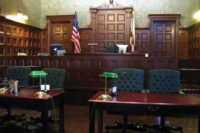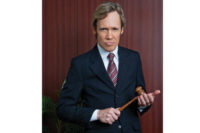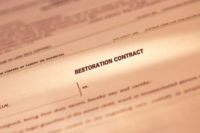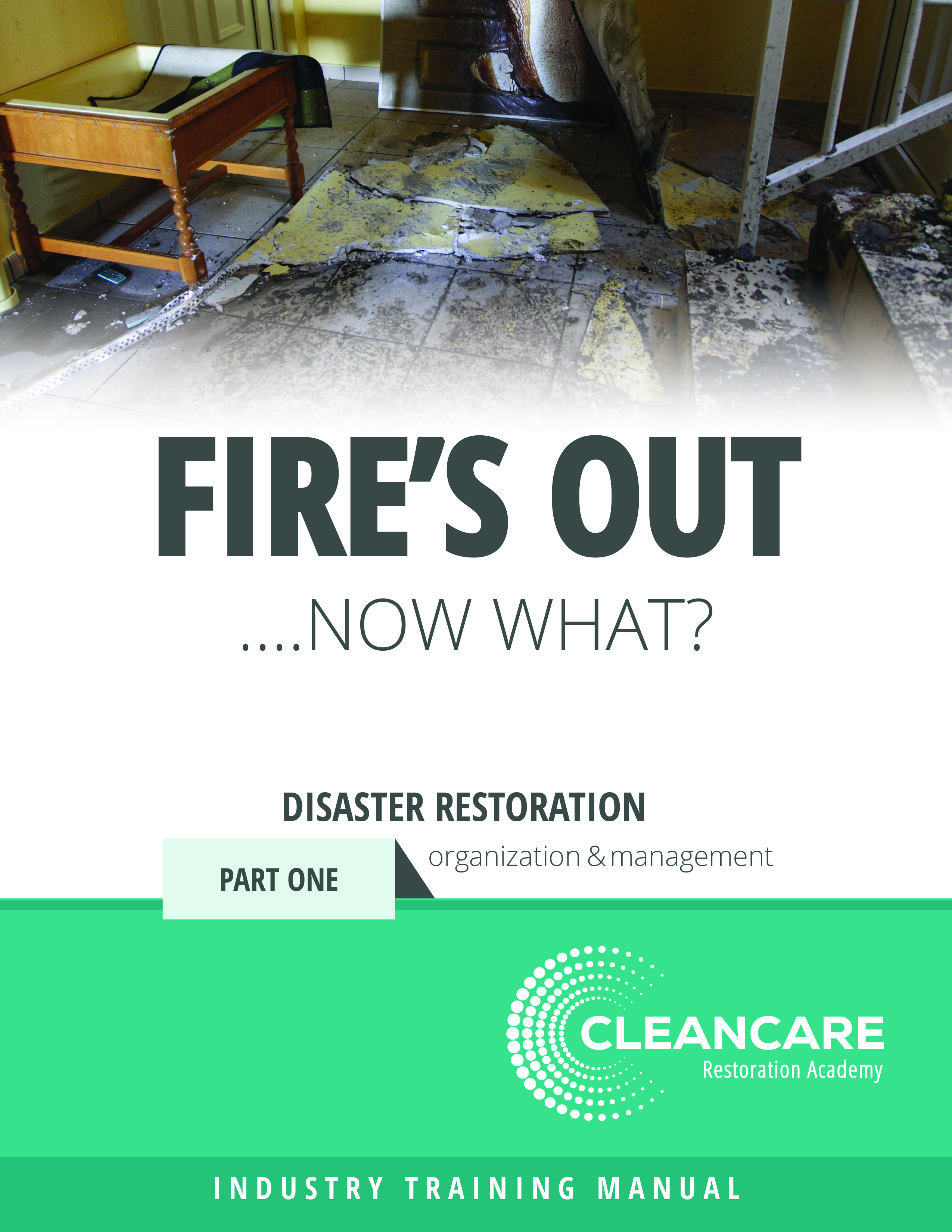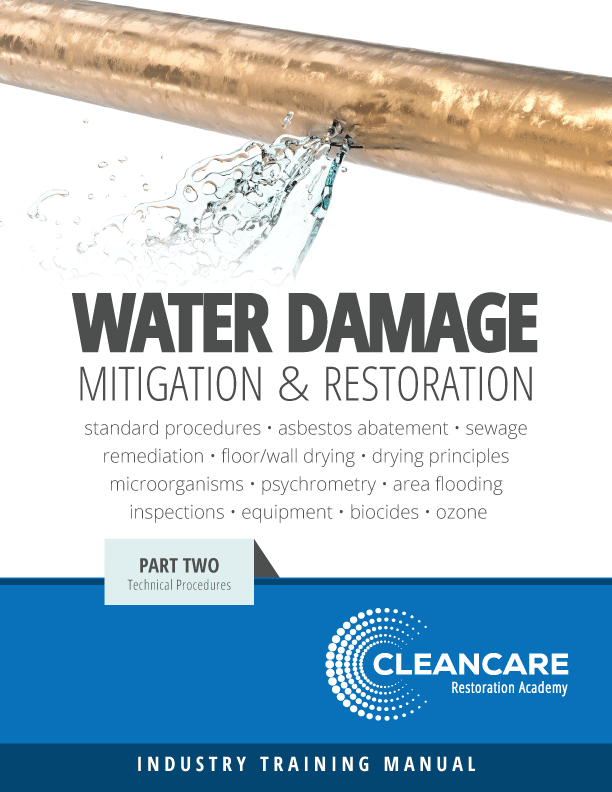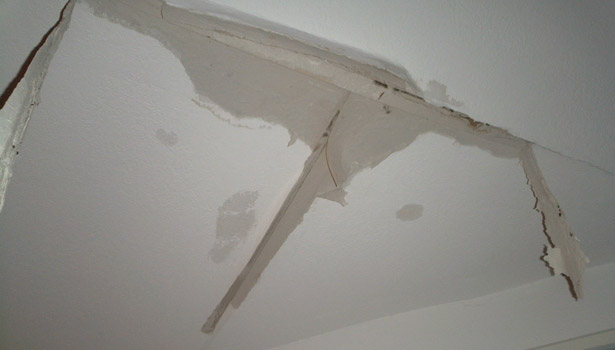Toxic Mold Litigation: 2013 Update (Part I)
Mold lawsuits remain plentiful and large recoveries still occur, although they have not wielded the devastation to the restoration industry that many had feared








Your Fears Realized
Customer comes home from vacation and notices a leak in the roof after a large rainstorm. Customer calls you to dry the structure and fix the leak. While you’re working, you happen to miss some water that has found its way down to the baseboard. Whoops. The customer later finds some mold around the unwanted water down below the leak. All of a sudden, the customer panics. MOLD?!? She can feel the mold spores growing in her lungs and is sure it’s going to be fatal. She’s seen the news programs, so she is an expert. There has never been any hint of mold in her home, ever. She has never had allergies, but she will now. In fact, the customer has never had any real problems until you ruined her perfect life.
If you’re lucky, you might get one phone call before you receive the Summons and Complaint. How will you address this? The first thing is try, within the bounds of reason, to make her happy because happy customers don’t file lawsuits.
Big Settlements
Mold lawsuits remain plentiful and large recoveries still occur, although they have not wielded the devastation to the restoration industry that many had feared. Large jury verdicts for mold claims are extremely rare, but the cases are expensive to litigate, which increases their settlement (nuisance) value.
In 2013, the City of Temple City, Texas, recovered $7.25 million to settle a case against the contractors and architects involved in the original construction of the nearly-new City Police Department Headquarters. Voters had passed an $11 million bond to build the headquarters and were less-than-pleased to learn it would cost $6 to $8 million to remediate the mold inside.
Construction was completed in 2005. Mold and other issues arose and sampling confirmed the presence of mold growth in 2009. However, the testing did not show molds commonly associated with significant health risks. Perhaps due to lack of urgency since the mold was not supposed to harm anyone, the architect and the contractors who built allegedly failed to offer a satisfactory plan to correct the problem. Remediators, heed this warning: Do not rely on mold testing to determine whether or not you should remediate a mold problem. Like Nike says: Just do it.
In 2010, out of frustration with the architect and the contractor, the City filed suit in an effort to get them to address the heating and cooling systems thought to be the cause of the mold problems. The suit alleged negligence, breach of contract and associated damages. If you ever needed a reason to act swiftly to remediate any mold issues that may be associated with work you have done, this is it. Remember, it is best to remediate the mold quickly and on your own terms than be dragged through a multi-year lawsuit because the mold found on the property may not have been considered “toxic.”
Construction lawsuits are typically complex and involve numerous parties, which tend to make lawsuits last longer than other civil cases, and much more expensive. In this case, there were nearly 20 parties to the lawsuit.
While the lawsuit was ongoing, in 2011, Temple City used taxpayer dollars to renovate the building and remediate the mold. About $5.3 million of the settlement will go to paying back the money spent on mold remediation. The Temple City police are back in the building now, and no new problems have been reported.
How are Mold Claims Proven in Court?
The answer to that varies by state, but here is a brief overview on the issue. Expert testimony can be tricky, particularly when it comes to mold-related health claims.
There are two main tests for expert testimony in court. Most states follow what is called the “Daubert Test.” This multi-factor, more stringent test states that if scientific, technical or specialized knowledge will assist the trier of fact, an expert may testify if the theory or technique can be or has been tested; whether it has been subject to peer review and publication; whether, in respect to a particular technique, there is a high known or potential rate of error and whether there are standards controlling the technique’s operation; and whether the theory or technique enjoys “general acceptance” within a “relevant scientific community.” This can create a major burden for a poorly-funded plaintiff’s lawyer, especially if he is faced with a vigorous defense.
In California and a few other states, the older Kelly/Frye test for experts is still being used. Under that test, evidence is admissible if it is based on a scientific technique generally accepted as reliable in the scientific community. This is clearly a much less difficult hurdle to jump.
With regards to mold, these tests can easily go either way. Mold is, after all, everywhere, and everyone reacts to it differently. The Centers for Disease Control (CDC) acknowledge that there are no recognized standards for the amount of mold or time of exposure that will cause symptoms. The CDC also recognizes that mold exposure can present health problems. So, how does one get from “no recognized standards” to an injury proven in a court of law to be caused by mold?
In an unpublished 2009 opinion, the New Jersey Appellate Court utilized the less stringent test to reverse a summary judgment by the trial court based on testimony from the Plaintiff’s doctor. Smith v. Northridge at Edison No. A-2482-07 (N.J. App. Div. Oct. 6, 2009). The doctor claimed that although his job is not to investigate, the facts given to him by the plaintiff led him to believe that the symptoms she suffered from were the result of mold in her apartment. The facts relevant for the doctor were that there was some type of mold present, her symptoms started when the water intrusion and mold growth occurred, and then ended when she left the apartment.
Is it generally accepted as reliable in the medical community that a doctor interprets the evidence given to him by a patient to come to the conclusion that the patient is suffering from a reaction to mold? The court in Smith believed it to be. That same testimony would likely not pass muster in another state since there seems to be a high potential rate of error.
In a more recent case in New York, an appeals court set new precedent that may open the door for more lawsuits based on illnesses related to mold exposure. The plaintiff suffered from dizziness, a rash, congestion and other issues. The results from the studies relied on by the plaintiff were “statistically significant, meaning the strength of the association was sufficient to conclude, within the rage of probability, that exposure to mold caused the identified ill-health risks.” In a nod to the acceptability of scientific evidence used in court, the appeals court stated that “scientists do not report their results in terms of black and white causality, but rather, in terms of the strengths of the associations found.” The Court did not rule that the mold caused the plaintiff’s illness, just that the case could go forward to a jury for them to decide. Cornell v. 360 W. 51st Street Realty, (2012). Could this be the beginning of a new wave of mold-related health claims? It could certainly affect the way judges in New York view evidence brought before them in these cases.
Mold is Mold is Mold
The exact effects these fungi have on humans are still being studied, and in our opinion, will not be fully understood during our lifetimes. Many of the published studies have been criticized for publication biases, inadequate sample sizes, poor controls and more. Crafty attorneys all over the country have attempted to use these studies in court. Sometimes experts are permitted to testify about them. Other times they are prohibited from testifying at all on grounds that they are relying on “junk science.” The best way to win in court is to avoid going there altogether.
For remediation purposes, it is technically not important to determine what type of mold you are dealing with. All mold should be treated the same. Mold spores enter into buildings in similar ways, no matter the type of mold. They can enter through doorways, windows, HVAC systems, people, animals, clothing, etc. There are many materials in buildings that provide suitable nutrients for mold growth such as gypsum board, ceiling tiles, wood, paper, cardboard, etc.
In Part II of this series on toxic mold litigation, I’ll cover how a jury is likely to react to mold evidence, how to be proactive in mold situations and what to do when litigation cannot be avoided. Be sure to check it out in the September R&R.
Looking for a reprint of this article?
From high-res PDFs to custom plaques, order your copy today!




